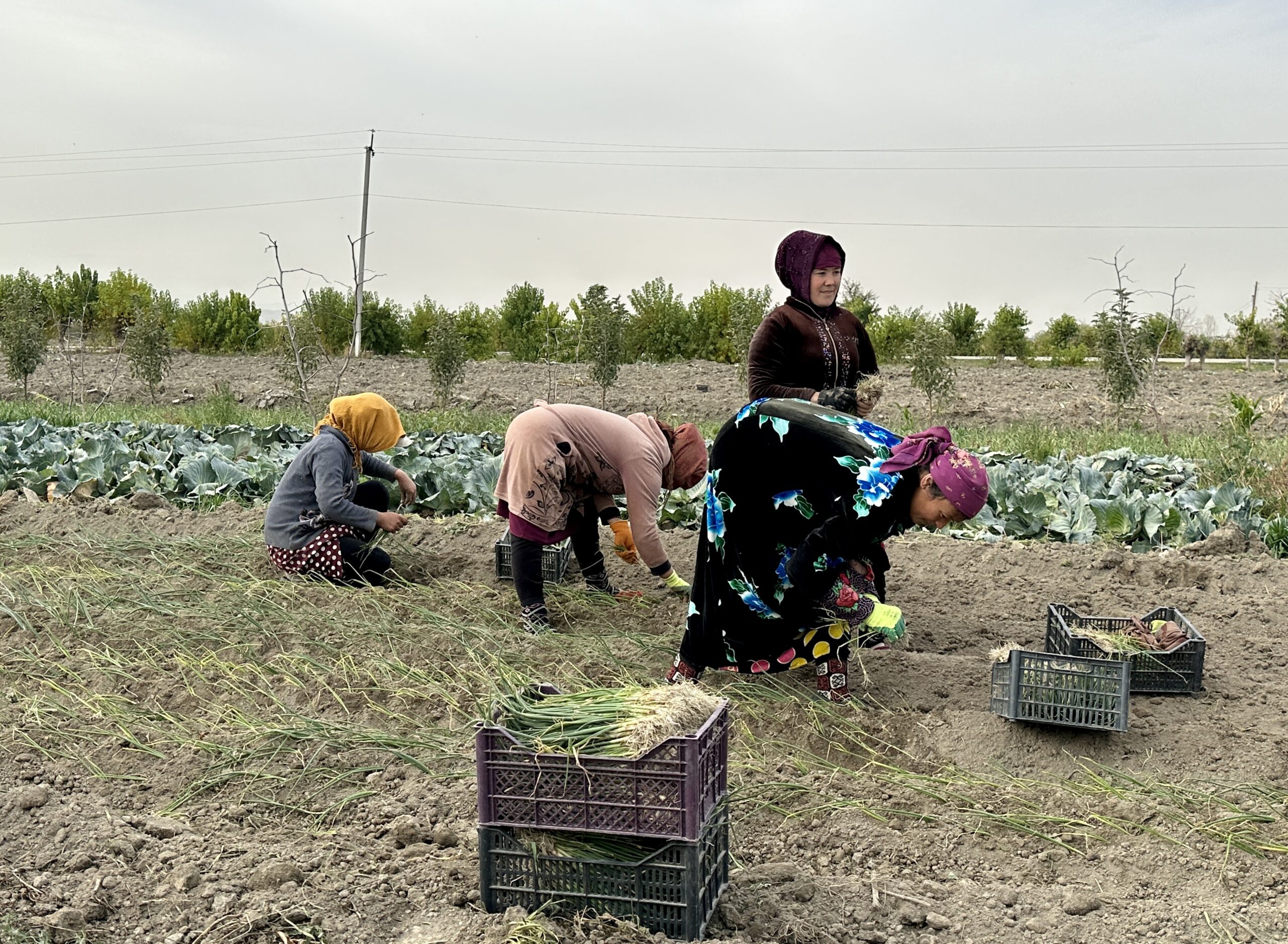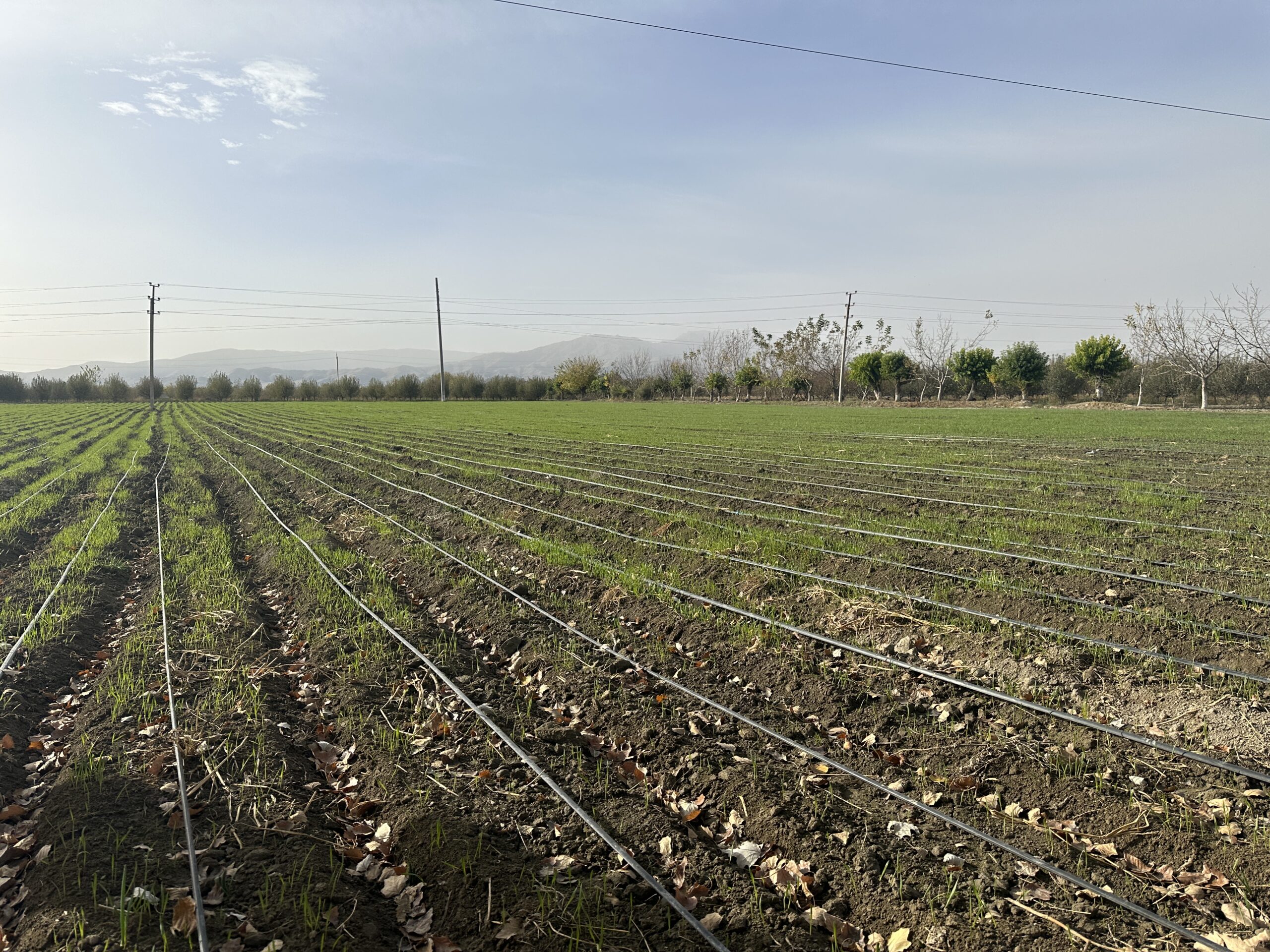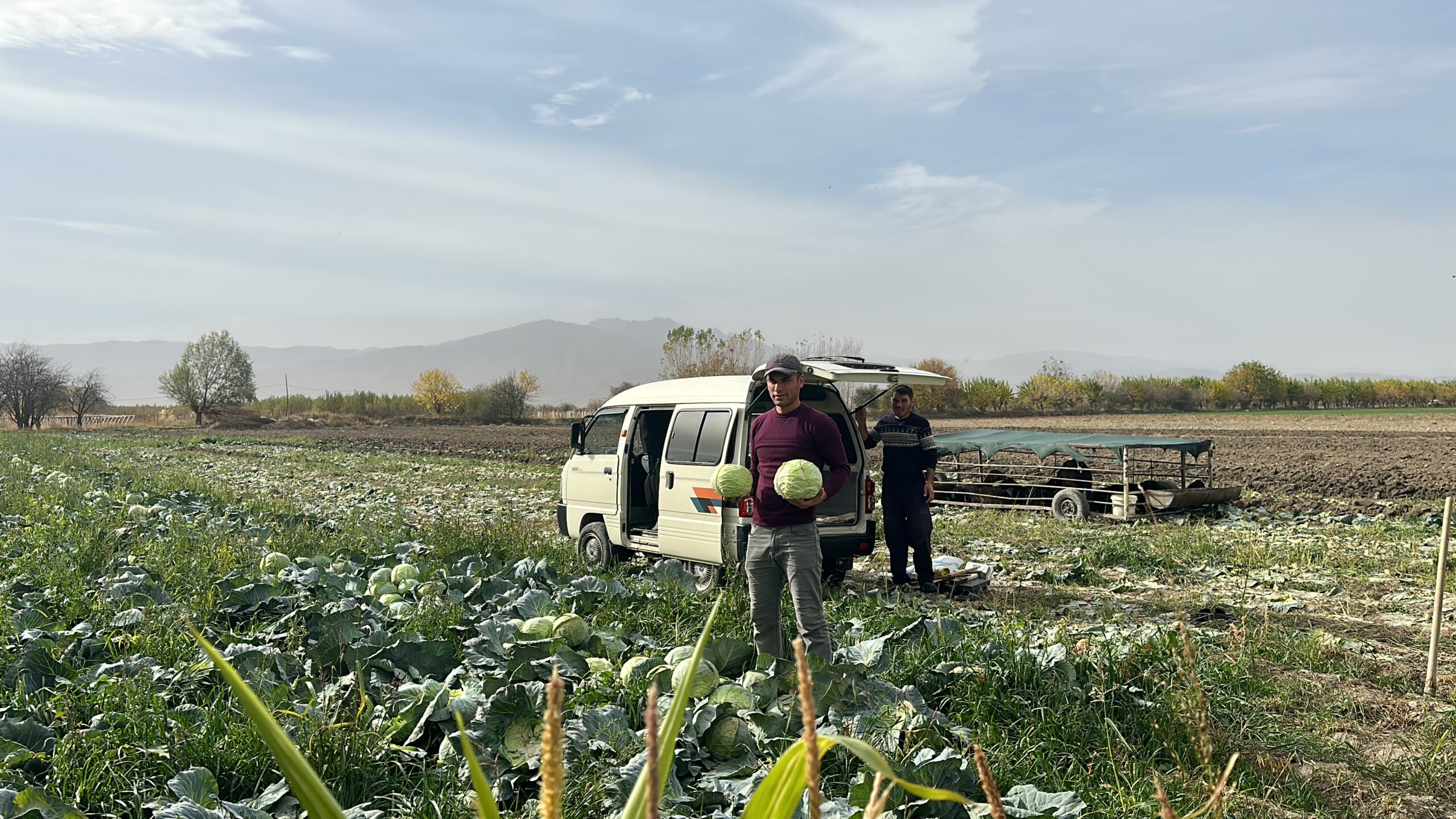SAMARKAND REGION – Uzbek farmers’ approach to farming shows that degraded lands can be made more productive through achievable changes in practices and technology that “do not cost the earth.”

Uzbek women planting young green onion sprouts. Photo credit: Aibarshyn Akhmetkali/The Astana Times
A group of journalists, including The Astana Times correspondent, visited several farms and fields near the Samarkand Region as a side event of the 21st session of the United Nations Convention to Combat Desertification (UNCCD) Committee on the Review of the Implementation of the Convention (CRIC21) on Nov. 10.
By involving farmers in sustainable water and soil management, the Samarkand Region serves as a model for other regions in Central Asia that suffer from water scarcity, desertification, soil erosion, and loss of agricultural production.
About the Samarkand Region
The Samarkand Region of Uzbekistan is capitalizing on the increasing demand for fruits, vegetables, and grains for both domestic consumption and export.

A group of journalists, including The Astana Times correspondent Aibarshyn Akhmetkali, visited several farms and fields near the Samarkand Region. Photo credit: Askar Yacubov
“The region is very progressive, has a lot of scientific potential and agricultural experience in the cultivation of many crops, including winter crops,” said Hidir Batirov, professor of the ecology department at Samarkand State University, during the trip to the farmer’s fields.
“The district is primarily famous for cotton, cereals, fruit crops, vegetables, gardening and cattle breeding. Share of the agrarian sector occupies around 10-12% of the country’s economy,” he added.
Drip irrigation
Drip irrigation is among the energy-smart technologies enabling Uzbek farmers to grow fresh vegetables in places that have a scarcity of productive land and water.

A field watered using drip irrigation. Photo credit: Aibarshyn Akhmetkali/The Astana Times
According to Batirov, drip-irrigation technology saved up to 45-60% of the water needed for open-field agriculture, compared to furrow irrigation that had been used previously.
While watering using regular irrigation by furrow, a large portion of the water evaporates straight away or percolates into the subsoil, taking away essential nutrients.
“Furrow irrigation inevitably leads to erosion,” said Batirov.
Despite the benefits of drip irrigation, Batirov mentioned that only around 10-15% of farmers use the new technology, but there are many who are fueled with optimism and interest to adopt it.
“Drip irrigation is a novelty in itself. But there is still a significant gap between a farmer and the implementation of the latest technology,” said Batirov.
According to Batirov, to help farmers adopt new technologies and reap the benefits, there needs to be training and familiarization.
“It often happens that scientists come to the farmer and say ‘Use this [new method].’ But a farmer doesn’t have the skills yet, so he finds it difficult. You have to teach him first, to show him on the spot and then organize everything. There should be seminars with the participation of scientists. Essentially, an intermediary is needed between those companies that provide the new technology and the farmers,” he added.
A key part of success is tied to helping farmers develop a network among each other to share news and results. This might snowball into a quicker and lasting change, pushing agriculture beyond the realm of sustainability, according to Batirov.
Keeping roots on the ground
Using fertilizers derived from the roots of last year’s crops can be as productive as using chemical ones, with the additional benefit of preventing land degradation.

Uzbek farmers harvesting cabbage. Next year different seeds will be planted on this field following the seasonal plant rotation method to preserve soil nutrients. Photo credit: Aibarshyn Akhmetkali/The Astana Times
It may seem unusual, but Uzbek farmers have been using the roots in the ground as a fertilizer because the remains of the plants contain key nutrients, such as phosphorus and potassium.
“Before our independence, the amount of organics in the soil was within 0.8% to 1.2% of humus. Since the 1950s, this amount has been reduced so much that now in the Samarkand Region, in most cases, the amount of organic humus is 0.75-0.92%, so less than 1%. This is, of course, bad. Under irrigation conditions, the amount of humus should be at least 1%.” said Batirov.
Daniyor Ashirov, one of the farmers who use this land preservation method, explained that a shield of crop residue on the surface of the soil helps prevent land degradation and provides constant soil enrichment.
“We make sure to leave organic matter. We get 40 centners of harvest, and after harvesting we leave the organic matter: leaves and roots, which account for 5-10 centners. This is 1.5 tons of organic matter,” said Ashirov.
Keeping crop roots on the ground also prevents nutrients from blowing or washing away.
“Here we see traces of irrigation erosion. We irrigate with a large amount of water, and the soil is washed away. Therefore, in order to cultivate any crop, our first task is to leave some amount of organic matter after this crop,” said Ashirov.
Seasonal plant rotation
Another method used by Uzbek farmers to keep the soil fertile is rotating plants seasonally. This principle goes hand in hand with keeping the plant roots – it helps keep the soil well-fed.
Soil prefers a variety of nutrients from different plants, so replanting the same crop every season deprives the soil of its organic matter, explained Ashirov.
“For example, potatoes take a lot of nutrients and fertilizers from the soil: nitrogen, phosphorus, potassium – macro and microelements. So, after potatoes, we will plant grain next year. If we plant the same thing, the yield drops,” he said.
Batirov added that by rotating plants, the soil is fed a more diverse diet, which increases the amount of life it can sustain.
“We need to rotate the seedlings. Otherwise, the soil becomes depleted. Particular crops may take a huge amount of nutritional elements from the soil, and we have to compensate for this loss,” he said.
With its first harvest just completed, Ashirov’s field is already ready for the plantation of different seeds.
“Here, instead of cabbage, next year we will plant potatoes. We will also plant tomatoes, carrots, and onions in other places,” said Ashirov.
Restoring the health of soil over time through such regenerative principles will also slow down the process of climate change, as fertile land can store more carbon.


